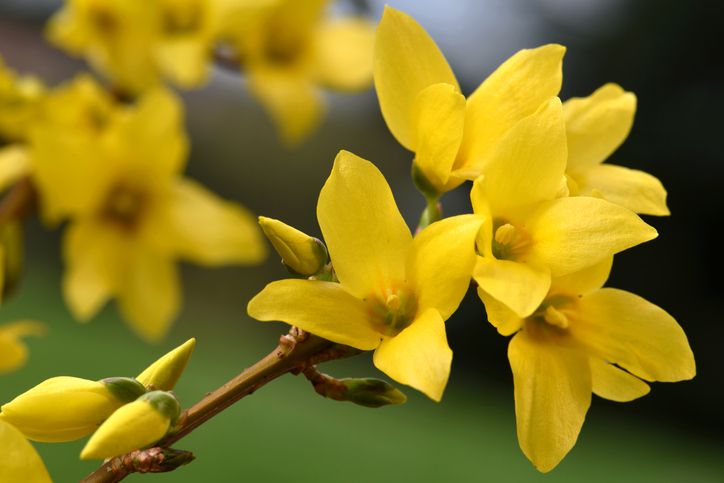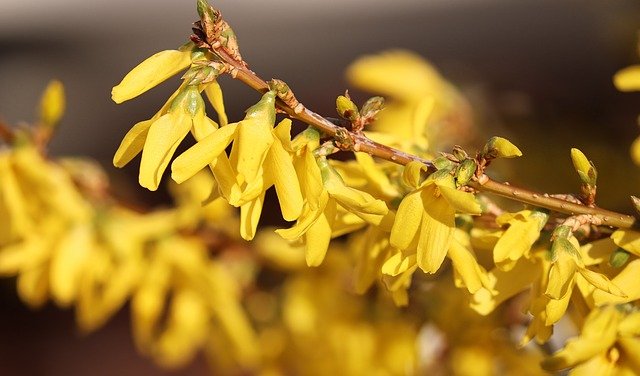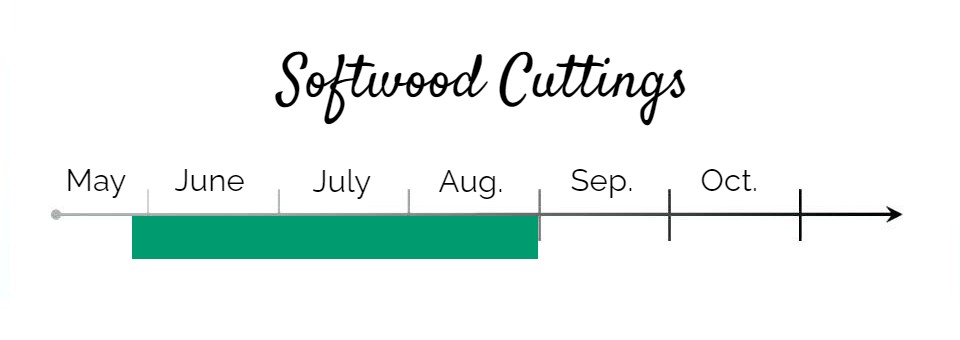

This guide is meant to teach you how to propagate Northern Gold Forsythia (Forsythia ovata) and hopefully make it easier for you to sell them at your own nursery.

Hardiness Zone: 2-9

Soil Type: Well-drained loam, sand, clay, or humus-rich soil

Water: Average. Drought Resistant

Exposure: Full to Partial Sun
‘Northern Gold’ Forsythia is a hardy zone 2 perennial shrub cultivar developed in Canada. Forsythia are great plants because of their general lack of disease, strong drought resistance, and reliable flowering year after year.
Forsythia flowers in early spring, masses of yellow flowers will appear and stay for a minimum of two weeks.
Northern gold forsythia is a great backdrop plant in your garden. The yellow flowers in the spring give great contrast within the back of a garden.
Fun fact: Forsythia belongs to the same plant family as the Olive.
Did you know some people use forsythia flowers to make delicious wild tea?
Best Way to Propagate Northern Gold Forsythia
By Taking Cuttings
A great method to propagate northern gold forsythia is to take cuttings from June to August.

When you propagate forsythia, you want to take the current year’s growth but not too early. The more you wait for the stems to harden, the more success you will have rooting the cuttings.
Follow the 6-week rule! That means you need to wait at least 6 weeks after the first leaves to take cuttings.
Also, a good idea is to take your cuttings when you’re ready to prune the shrub.
- First: Cut the stems from the new year’s growth. Cuttings should be no more than 5-6 inches each, and not too thin either (thin twigs have a harder time rooting).
- Second: Snip off almost all the leaves on the stems except a maximum of 4-5 top leaves.
- Third: Fill a propagation box with coarse sand or perlite (the substrate needs to drain well and be infertile).
- Fourth: Take a 30cm ruler and make a trench into your sand, dip the cuttings in rooting hormone, place them into your trenches and push the sand around them.
Note: You won’t need to space them out, plant as many as you can. Spacing won’t matter much because when they’re rooted, you can just lift them from the sand and easily separate the roots.
Next, if you have sprinklers, keep the sand moist but not wet. They can be in full sun or shade, it doesn’t matter.
Alternatively, if you don’t have sprinklers, put them in partial shade, and you can cover them with shade cloth or plastic to keep the humidity levels up.
Under perfect conditions, forsythia cuttings will root within 3-4 weeks.
How to Ready Northern Gold Forsythia for Sale
Cuttings are really the best way to propagate northern gold forsythia. Why? Because it’s such a common plant that you don’t need to order seeds online. It’s very likely that your local nursery or garden center will have plants you can use to propagate.
When your cuttings have properly rooted, all you need to do next is to pot them up in well-drained loamy soil.
They have a tendency to grow into wild shapes and get ugly real easily, so you absolutely want to prune them often.
The key is to prune them after they flower, which happens pretty quickly into the season. I’ve seen some nice-looking forsythias that have had most stems pruned except a few large stems that became ‘trunks’.
In general, keep them a tight bush shape and they’ll sell well.
Once planted, forsythias can make great hedge plants ranging from 2.5m in height and spread.
Need some help figuring out how to start your plant nursery? Check out our guide here.


On your webpage under ‘How to propagate Forsythia Northern Gold’ you list Forsythia ‘Northern Gold’ as native to Ireland.
Please take note that the Fosythia cultivar ‘Northern Gold’ was developed in Canada by the Morden research station in the Province of Manitoba. If you know differently, please enlighten me.
Erna Villiger
Beaverlodge, Alberta
Canada
Good Afternoon Erna, you’re right. That was a mistake on my part, thank you for pointing it out!